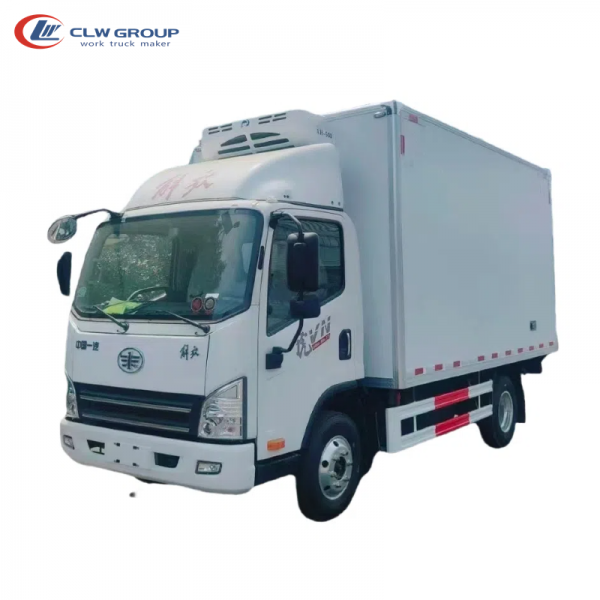Introduction
Work truck drivers play a critical role in various industries, transporting goods, equipment, and materials to their destinations. However, the nature of their job poses inherent risks and challenges that can compromise their safety and well-being. It is essential for employers, fleet managers, and drivers themselves to prioritize safety measures to prevent accidents, injuries, and fatalities on the road. In this comprehensive guide, we will explore the importance of work truck driver safety and provide best practices and guidelines to ensure a safe working environment for all.
Understanding the Risks
Driving a work truck involves navigating through different road conditions, traffic patterns, and weather elements, making it a high-risk occupation. According to the Bureau of Labor Statistics, transportation incidents are the leading cause of work-related fatalities in the United States, with truck drivers facing a higher risk compared to other occupations. Factors such as fatigue, distractions, inadequate training, and non-compliance with safety regulations contribute to the vulnerability of work truck drivers on the road.
Importance of Work Truck Driver Safety
Ensuring the safety of work truck drivers is not only a legal obligation for employers but also a moral responsibility to protect their employees from harm. Implementing effective safety measures not only reduces the risk of accidents and injuries but also enhances the overall productivity and efficiency of the workforce. By prioritizing driver safety, companies can demonstrate their commitment to employee well-being and create a positive work culture that values safety above all else.

Best Practices for Work Truck Driver Safety
1. Comprehensive Training: Proper training is essential for work truck drivers to understand the specific requirements of their job, including vehicle operation, maintenance, defensive driving techniques, and emergency procedures. Employers should provide initial and ongoing training to ensure that drivers are equipped with the knowledge and skills to handle various situations on the road.
2. Vehicle Maintenance: Regular maintenance of work trucks is crucial to prevent mechanical failures that could lead to accidents. Drivers should perform pre-trip inspections to check for any issues with brakes, tires, lights, and other essential components. Employers should establish a maintenance schedule and ensure that all vehicles are in optimal condition before each trip.
3. Fatigue Management: Driver fatigue is a common cause of accidents among work truck drivers, especially those who operate long-haul routes. Employers should implement policies to limit driving hours, provide rest breaks, and encourage drivers to get an adequate amount of sleep. Drivers should recognize the signs of fatigue and take proactive measures to avoid driving while drowsy.
4. Avoiding Distractions: Distractions such as texting, talking on the phone, or eating while driving can impair a driver's focus and reaction time. Employers should prohibit the use of mobile devices while driving and educate drivers on the dangers of distracted driving. Drivers should also minimize distractions inside the cab and prioritize their attention on the road ahead.
5. Compliance with Regulations: Work truck drivers are subject to various regulations and guidelines set forth by regulatory agencies such as the Department of Transportation (DOT) and the Federal Motor Carrier Safety Administration (FMCSA). Work truck warranties and what they cover should ensure that their drivers are aware of and comply with these regulations, including hours-of-service limits, vehicle weight restrictions, and licensing requirements.
6. Emergency Preparedness: Accidents and breakdowns can occur unexpectedly while on the road, requiring drivers to act swiftly and responsibly. Drivers should be trained in emergency procedures such as contacting emergency services, administering first aid, and securing the scene of the incident. Employers should provide drivers with emergency kits and resources to handle potential crisis situations.
7. Defensive Driving Skills: Defensive driving techniques can help work truck drivers anticipate and avoid potential hazards on the road. Employers should offer defensive driving courses to enhance drivers' skills in hazard recognition, space management, and collision avoidance. Drivers should practice defensive driving principles to protect themselves and others from accidents.
8. Use of Personal Protective Equipment (PPE): Work truck drivers may be exposed to various safety hazards during their job, such as loading and unloading materials, handling equipment, or working in inclement weather conditions. Employers should provide drivers with appropriate PPE, such as high-visibility clothing, gloves, safety glasses, and hard hats, to protect them from potential injuries.
9. Health and Wellness Programs: The physical and mental well-being of work truck drivers can impact their performance on the road. Employers should offer health and wellness programs to support drivers in maintaining a healthy lifestyle, managing stress, and seeking medical assistance when needed. Drivers should prioritize their health through regular exercise, balanced nutrition, and adequate rest.
10. Communication and Reporting: Open communication between drivers, fleet managers, and safety supervisors is essential for identifying and addressing safety concerns in a timely manner. Drivers should report any safety hazards, near misses, or incidents to their supervisors promptly. Employers should encourage a culture of transparency and accountability to ensure that safety issues are resolved effectively.
Conclusion
Work truck driver safety is a paramount concern that requires the collective efforts of employers, fleet managers, and drivers to mitigate risks and promote a safe working environment. By implementing best practices and guidelines for driver safety, companies can protect their most valuable asset—their employees—and uphold their commitment to excellence in safety standards. It is imperative for all stakeholders in the transportation industry to prioritize safety above all else and work together towards the common goal of preventing accidents, injuries, and fatalities on the road. Remember, safety starts with each individual driver's commitment to following best practices and making safety a top priority in every journey.
